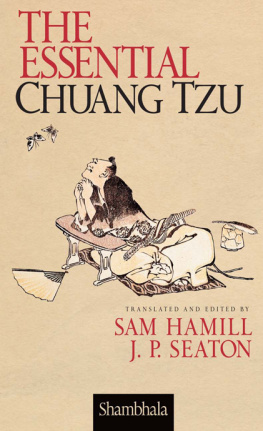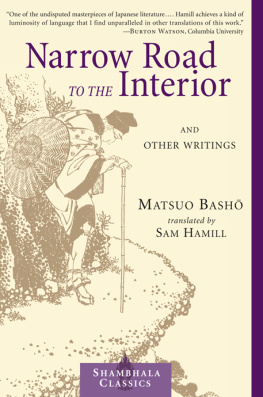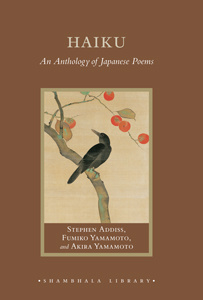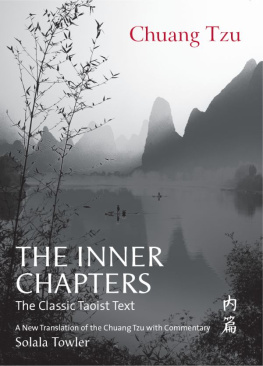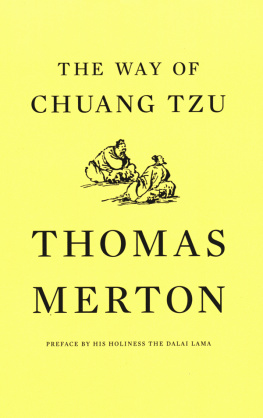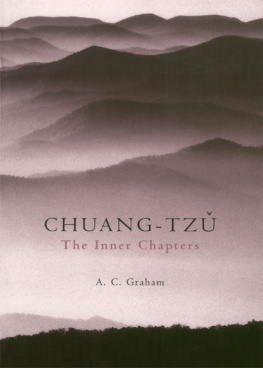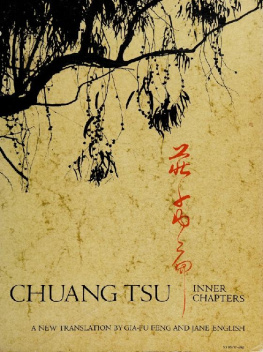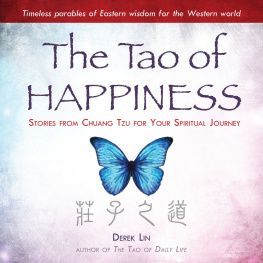This new translation, which expertly preserves the humor and bite of these ancient teachings, will entice a whole new audience to readand rereadChuang Tzus writings.
Publishers Weekly
ABOUT THE BOOK
The Chuang Tzu has been translated into English numerous times, but never with the freshness, accessibility, and accuracy of this remarkable rendering. Here the immediacy of Chuang Tzus language is restored in a idiom that is both completely fresh and true to the original text. This unique collaboration between one of Americas premier poet-translators and a leading Chinese scholar presents the so-called Inner Chapters of the text, along with important selections from other chapters thought to have been written by Chuang Tzus disciples.
SAM HAMILL has translated more than two dozen books from ancient Chinese, Japanese, Greek, Latin, and Estonian. He has published fourteen volumes of original poetry. He has been the recipient of fellowships from the National Endowment for the Arts, the Guggenheim Foundation, the Woodrow Wilson Foundation, and the Mellon Fund. He was awarded the Decoracin de la Universidad de Carabobo in Venezuela, the Lifetime Achievement Award in Poetry from Washington Poets Association, and the PEN American Freedom to Write Award. He cofounded and served as Editor at Copper Canyon Press for thirty-two years and is the Director of Poets Against War.
J. P. SEATON is Professor of Chinese at the University of North Carolina, Chapel Hill. He is the translator of numerous books, including The Poetry of Zen and The Shambhala Anthology of Chinese Poetry, and his poetry translations have been widely anthologized in such books as The Anchor Book of Chinese Poetry, The Norton Anthology of World Poetry, and The Vintage Book of Contemporary World Poetry.
Sign up to learn more about our books and receive special offers from Shambhala Publications.

Or visit us online to sign up at shambhala.com/eshambhala.
The Essential
CHUANG TZU
Translated from the Chinese by
SAM HAMILL and J. P. SEATON

SHAMBHALA
Boston & London
2013
SHAMBHALA PUBLICATIONS, INC.
Horticultural Hall
300 Massachusetts Avenue
Boston, Massachusetts 02115
www.shambhala.com
1998 by Sam Hamill and J. P. Seaton
Cover art: Chuang-tzu Dreaming of the Butterflies, by Hokusai (17601849), from the Hokusai shashin gafu (1814). Reproduced by kind permission of the Trustees of the Chester Beatty Library, Dublin.
Portions of this book have been previously published in American Poetry Review and Five Points.
All rights reserved. No part of this book may be reproduced in any form or by any means, electronic or mechanical, including photocopying, recording, or by any information storage and retrieval system, without permission in writing from the publisher.
The Library of Congress catalogs the hardcover edition of this book as follows:
Chuang-tzu.
[Nan-hua ching English]
The essential teachings of Chuang-Tzu/translated by Sam Hamill and J. P. Seaton.
p. cm.
eISBN 978-0-8348-2824-7
ISBN 978-1-57062-336-3 (alk.paper)
ISBN 978-1-57062-457-5 (pbk.)
I. Hamill, Sam. II. Seaton, Jerome P. III. Title.
BL1900.C46E5 1998 97-38797
299.51482dc21 CIP
TO Burton Watson
AND TO
Christopher Yohmei Blasdel,Jerry Douglas, Russ Barenberg,and Edgar Meyer
I F ALL THE CHINESE POETS, PAINTERS, AND WRITERS WHO ever lived were queried and asked to name just one book of their favorite reading, the nomination would certainly go to the writings of Master Chuang. The book that came to be known as the Chuang Tzu is an anthology of early Taoist thought. At least seven of its thirty-three surviving chapters can be attributed to the philosopher Chuang Chou (369286 BCE). The books appeal to Chinese intellectuals through the millennia derives as much from its content as from its style. Chuang Tzus message of freedom and nonconformity liberates the Chinese mind and provides a wholesome antidote to the ethical and social values embraced by the Confucianists. The writer was a born storyteller and a supreme artist with words: he used all the resources of language that were at his disposalfrom anaphora to zeugma, hyperboles and litotes, parallelism and antithesis, paradox and humor, and, most devastating of all, a device known as the non sequitur. Chuang Tzu drew from a vast storehouse of ancient Chinese myths, legends, and unrecorded history, as well as from an encyclopedic knowledge of what may be regarded as the unnatural natural history, to weave togetherby means of parables and anecdotal debatesthe vision of a skeptic and mystic, in a world beset by constant and dangerous moral choices.
Complete or partial English translations of Chuang Tzu are available in many versionsincluding those from the last century by Herbert Giles (1889) and James Legge (1891); the more scholarly, modern contributions by Arthur Waley (1939) and Burton Watson (1964 and 1968); the more poetically nuanced ones by Lin Yutang (1948) and Thomas Merton (1965); and the still more recent scholarship of Angus C. Graham (1981) and Victor H. Mair (1994). However, Sam Hamill and Sandy Seatons new retranslation of this much-beloved Taoist classic has much to commend itself, largely by virtue of its boldness of approach and its innovative use of language. Let me elaborate.
The book is a collaborative effort by two of the most talented wordsmiths of their generation, and it employs a language that is vibrant and colorful. It aims at readability even to the extent of ignoring formal fidelity in translation. In tackling the problem of translating from one language to another, it has been generally assumed that there are two approaches possible: the literal or the free. But the more seasoned translators have come to realize that there is a third alternative, which is preferable. And that is to temper faithfulness to the original with expressiveness in the target language and to combine straightforwardness with elegance; ultimately, to achieve what have been recognized as the three desiderata of translation: hsin (fidelity), ta (expressiveness), and ya (elegance).
For a translation from a tersely worded philosophical text, it must be obvious to many that a literal approach is the least rewarding and ought not to be exclusively relied upon. If care is not taken in this regard, one can expect to find, as one does in Fung Yu-lans translation, such a passage: The universe is a finger; all things are a horse. The possible is possible. The impossible is impossible. The Tao makes things and they are what they are. What are they? They are what they are. What are they not? They are not what they are not (Chuang-tzu, 1931; 1989 reprint p. 45). Even in the newest, more lucid translation by Victor Mair (Wandering on the Way, 1994), one encounters this passage as: Heaven and earth are the same as a finger; the myriad things are the same as a horse. Affirmation lies in our affirming; denial lies in our denying. A way comes into being through our walking upon it; a thing is so because people say that it is. Why are things so? They are so because we declare them to be so. Why are things not so? They are not so because we declare them to be not so (p. 16). Contrast the above with the bold reduction of these arguments into just a few words by Hamill and Seaton: Heaven-and-earth is one finger. All ten thousand things are one horse. Okay? Not okay. Okay? Okay. Walk in the Tao. Accomplish it all. Say words, and theyre so. How so? Is so? How not so? Not so
Next page
